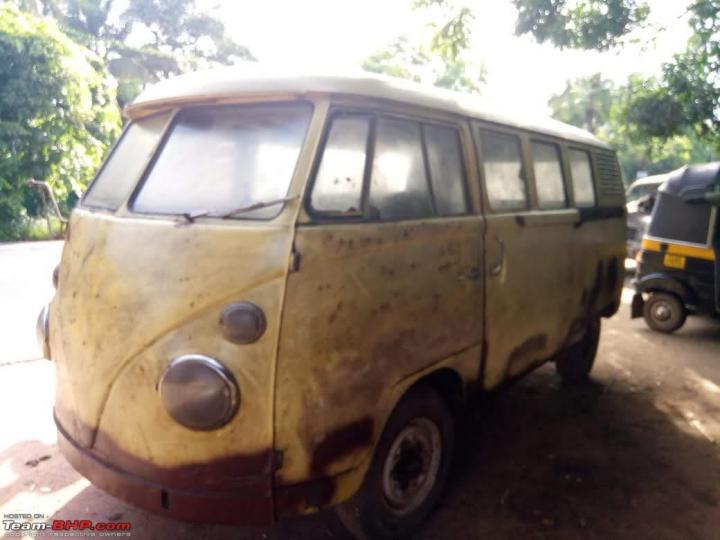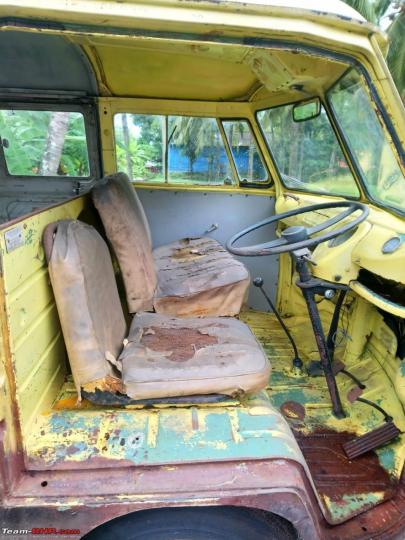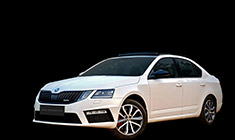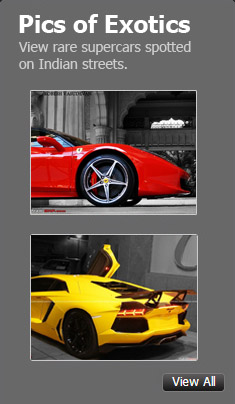News
Restoration of Fillmore: A 1967 Volkswagen Split Bus
His son christened the Kombi ‘FILLMORE’, after Lightning McQueen’s pal from the movie Cars.
BHPian aravind511 recently shared this with other enthusiasts.
This is the story of a good friend of mine who has been working abroad for more than a decade now. It is about how his passion for finding and restoring abandoned vintage vehicles in India. Despite being out of the country for more than 11 months in a year, it has landed upon his destiny of finding a very rare Volkswagen Split bus and take up the humongous task of restoring it.
The love for classic Volkswagens grew in the country over the last decade and most of the available Beetles and buses were already taken. Prices started going over the roof for the Beetles and the buses over this period, and in the last few years it touched the moon. Split window buses were a rare find even before 2010, and only the destined few were able to find those. My friend found an unmolested, 1967 VW Kombi which had been safely stored for over 20 years with all parts intact, and that too, in his own village. She was waiting like Rapunzel until her prince turned up in 2018.
His son christened the Kombi ‘FILLMORE’, after Lightning McQueen’s pal from the movie Cars.
Fillmore: The story begins.
My friend first spotted the bus back in 2008, during his annual vacation, in a neighborhood garage. He was amazed to find such a beauty in his own village kept away from everyone else’s eyes. He tried to convince the owner to sell the bus to him but the owner was quoting something far out of his reach at the time. Later it became a habit for him to meet the owner every time when he came home for vacation and after ten years of persistent efforts, he successfully convinced the owner to sell the van to him. In fact it was a pleasant surprise that the van had not been rescued by someone over these years, despite too many VW enthusiasts out there chasing VWs.
These are some pics from where she was lying for over 20 years:



The air-cooled engine under hibernation.


The sad state of the interiors when found.

A brief history:
For over 60 years, Germany and India have been working jointly for sustainable economic, ecological, and social developments. For this purpose, the Indo-German Development Corporation was formed in 1958. Among the notable projects completed with the German assistance are the Rourkela Steel Plant and IIT Madras. The Indo-German Nilgiris Development Program, which started in 1967 was also one of them and it covered over 16,000 farm holdings and helped small farmers to get loans and determine favorable cultivation practices.
A number of Volkswagens, mostly buses and variants, were imported into the Nilgiris during 1967-68 for this program. The lot of the buses contained split-windows and bay-windows. All of these vehicles were registered in the Nilgiris and had MDN series number plates. As far as I know, only 2 or 3 of those split buses survive and Fillmore is one of them. The MDN series number near about 8000 is an identifier for these buses. Are there any more of them hiding in some garages down south? Only time will tell.

THE MDN number plate which came on Fillmore.

The old RC book mentions about the Indo-German Nilgiris Development Project, the purpose for which Fillmore came to India.
Why is Fillmore special?
Usually split buses came with swivel opening twin doors on one side. Baywindows came with more door options which included sliding doors on both sides as well. However in 1967, just before phasing out the splits and launching the baywindows, VW sold very few splits with sliding doors. But these were produced and sold only in small numbers and only a fraction of such specced splits survive now world over.
The Indo-German Nilgiris Development project saw a few German experts with specialized knowledge and experience in various fields connected with the objective moving down to India for a few years. A fleet of 20 vehicles were said to be imported through the Cochin harbor for this project, Among these vehicles sent to Nilgiris were these split windows with sliding doors and Fillmore was one of them. As far as I know, today Fillmore is one of the only two surviving splits with sliding doors on either side in the country. A split bus with factory fitted sliding doors is quite a rare find even in the international market. Hence Fillmore is indeed a special find.
Here are some pictures of the sliding door and the channel:



Fillmore and his companions enjoyed quite a few years in the Nilgiris. Their duties included estate visits and taking the officers around the estates for inspection. It is said that during the estate tours, the officers would keep both the sliding doors open for getting the best views of the estate and also take some workers along, where the workers sat on the floor of the bus while the officers occupied the rear seat.
After the service at Nilgiris was over, Fillmore was auctioned off to Tirupur and spent its life there until the previous owner bought it in 1998. The previous owner, a garage owner, was also involved in the management of a school in Kerala. In 1998, the school decided to upgrade its school bus from an HM Trekker to a Standard van. The previous owner went to Tirupur in search of a Standard 20. He saw Fillmore there liked it and tagged it along with the Standard van to Kerala. The Standard would do the school bus duties and the VW would be his personal vehicle for some years to come. The fitness for both the vehicles were renewed for 5 years and they were both driven to Kerala. Thus Fillmore reached a small town Engandiyur, near Thrissur.
Fillmore served the owner well until 2003 when the fitness got expired. Also by that time, the brake master cylinders had given up and finding an OE replacement was next to impossible. Luckily, the owner was wise enough not to go the jugaad way and parked the split bus in a safe corner of his garage. Little did Fillmore know that it was a start of a very long hibernation.
As time passed, Fillmore became an integral part of the garage and the people around started to forget its presence there. It quietly stood at one corner and gradually turned into a large storage shelf for the spares and tools. The painters in the garage used its body as a surface to test the quality of colours they mixed. However the previous owner had taken enough precautions to prevent her from rusting away. Primer was applied to the entire bottom area of the bus before storage. There was only minimal rust on its body when it was rescued despite the fact that it laid only 2 kilometers away from the sea for all these years.
Fillmore was rescued in July 2019. It saw the daylight for the first time in 16 years and I will let a lot of pictures do the talking to show how happy a day it was for Filllmore.

First rays in a long time.
Also you can see the primer running along the bottom of the bus. A clever thought by the owner before sending it to storage.

The recovery truck has arrived.

Fillmore hops on with full joy.

All set to roll. Though with assistance, after a long time.

Fillmore had forgotten something like water existed. First wash after 16 years.

Drying up. Notice the various colours on the body which had once turned into a canvas for random painters.

The cute puppy face.

I am squeaky clean and fresh now.

The engine bay washed and dried.

A motorhome?

Fillmore is excited and says, "Let's go for a drive!"

Removing the seat covers revealed factory upholstery, though in a bad shape.

The dashboard with original meters in place.

The key to happiness.

Every single piece had this VW stamping.
Continue reading on BHPian aravind511's restoration story of Fillmore the 1967 VW Split Bus for BHPian comments, insights and more information.


















_4.jpg)
.jpg)



